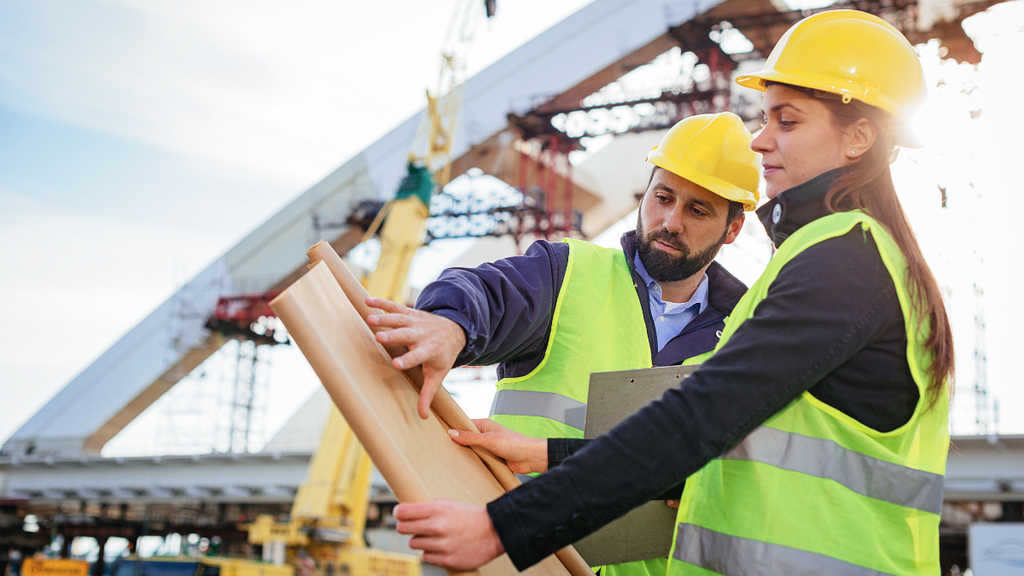An Unbiased View of Geotheta
An Unbiased View of Geotheta
Blog Article
Geotheta Things To Know Before You Buy
Table of ContentsOur Geotheta PDFsThe Best Strategy To Use For GeothetaFascination About GeothetaNot known Details About Geotheta Some Ideas on Geotheta You Should Know

They perform site investigations, gather samples, execute lab examinations, and assess information to review the suitability of the ground for construction jobs - Tailings Engineer. Based upon their findings, geotechnical engineers offer suggestions for structure layout, slope stability, retaining frameworks, and mitigation of geotechnical hazards. They team up with other professionals, such as designers, structural designers, and building teams, to make certain that geotechnical factors to consider are incorporated right into the general task style and execution
By analyzing the behavior and properties of soil and rock, they can identify potential geotechnical risks such as landslides, soil negotiation, or incline instability. Their competence helps stop failures or crashes that could jeopardize lives and home. Right here are some thorough tasks and obligations of a geotechnical designer: Website Examination: Geotechnical designers conduct website investigations to gather data on subsurface problems.
They interpret the information to understand the properties and behavior of the dirt and rock, including their toughness, leaks in the structure, compaction qualities, and groundwater problems. Geotechnical Analysis and Style: Geotechnical engineers evaluate the information accumulated during site examinations to analyze the security and suitability of the website for construction tasks. They carry out geotechnical estimations and modeling to examine factors such as bearing ability, settlement, incline stability, lateral earth stress, and groundwater flow.
Everything about Geotheta
Structure Layout: Geotechnical designers play a critical duty in designing foundations that can safely sustain the designated framework. They analyze the soil conditions and tons requirements to determine the ideal foundation type, such as superficial foundations (e.g., grounds), deep foundations (e.g (https://canvas.instructure.com/eportfolios/3071866/Home/Why_Geotechnical_Engineers_Are_Essential_for_Your_Construction_Projects)., stacks), or specialized techniques like soil improvement. They consider elements such as settlement restrictions, bearing capability, and soil-structure interaction to develop optimum structure designs
They examine building and construction strategies, screen site tasks, and perform field inspections to validate that the layout suggestions are followed. If unpredicted geotechnical problems develop, they assess the situation and offer suggestions for remediation or changes to the layout. Threat Evaluation and Reduction: Geotechnical designers analyze geotechnical risks and threats associated with the job site, such as landslides, liquefaction, or soil erosion.

Partnership and Communication: Geotechnical engineers work closely with other specialists involved in a job, such as architects, structural designers, and construction teams. Effective communication and collaboration are important to incorporate geotechnical considerations right into the total project style and building and construction procedure. Geotechnical designers provide technical experience, response inquiries, and guarantee that geotechnical needs are fulfilled.
All about Geotheta
Below are some types of geotechnical designers: Foundation Engineer: Foundation engineers concentrate on designing and analyzing foundations for frameworks. They assess the soil problems, tons demands, and site characteristics to establish one of the most appropriate structure kind and layout, such as shallow structures, deep foundations, or specialized methods like heap structures.
They evaluate the aspects influencing slope security, such as soil properties, groundwater conditions, and incline geometry, and develop approaches to avoid slope failures and alleviate risks. Quake Engineer: Earthquake designers specialize in assessing and creating frameworks to stand up to seismic forces. They analyze the seismic risk of a website, review dirt liquefaction capacity, and develop seismic style requirements to guarantee the safety and durability of frameworks throughout quakes.
They carry out area testing, collect examples, and examine the gathered information to characterize the dirt residential properties, geologic formations, and groundwater problems at a website. Geotechnical Instrumentation Designer: Geotechnical instrumentation engineers concentrate on tracking and measuring the behavior of dirt, rock, and frameworks. They mount and maintain instrumentation systems that keep an eye on factors such as dirt negotiation, groundwater degrees, slope movements, and structural displacements to analyze performance and give early cautions of potential issues.
Geotheta for Dummies
They carry out examinations such as triaxial examinations, loan consolidation tests, direct shear examinations, and leaks in the structure examinations to collect data for geotechnical analysis and design. Geosynthetics Engineer: Geosynthetics designers focus on the layout and application of geosynthetic materials, such as geotextiles, geogrids, and geomembranes. They use these products to improve dirt stability, reinforce inclines, offer water drainage remedies, and control erosion.
They have a tendency to be investigative people, which means they're intellectual, introspective, and curious. They are interested, methodical, reasonable, logical, and logical. Some of them are likewise social, indicating they're kind, charitable, cooperative, individual, caring, useful, empathetic, tactful, and pleasant - Consulting Engineer.
In the workplace setting, geotechnical engineers make use of specialized software application tools to execute computations, produce styles, and analyze data. They prepare records, evaluation project specifications, communicate with customers and employee, and coordinate job tasks. The office setting provides a helpful environment for study, evaluation, and collaboration with other professionals associated with the task.
Indicators on Geotheta You Should Know
They often see project sites to perform site examinations, examine geotechnical problems, and collect information for analysis. These brows through involve taking a trip to different areas, in some cases in remote or tough surfaces. Geotechnical designers may do soil tasting, conduct examinations, and display construction tasks to make sure that the geotechnical aspects of the job are being applied appropriately.
Geotechnical designers likewise function in specialized geotechnical laboratories. In these facilities, they carry out experiments, execute tests on soil and rock samples, and assess the engineering useful site residential or commercial properties of the materials. Geotechnical laboratory designers function extensively in these atmospheres, handling screening equipment, operating instruments, and videotaping information. They team up with various other laboratory staff to ensure precise and reliable testing outcomes.
Report this page